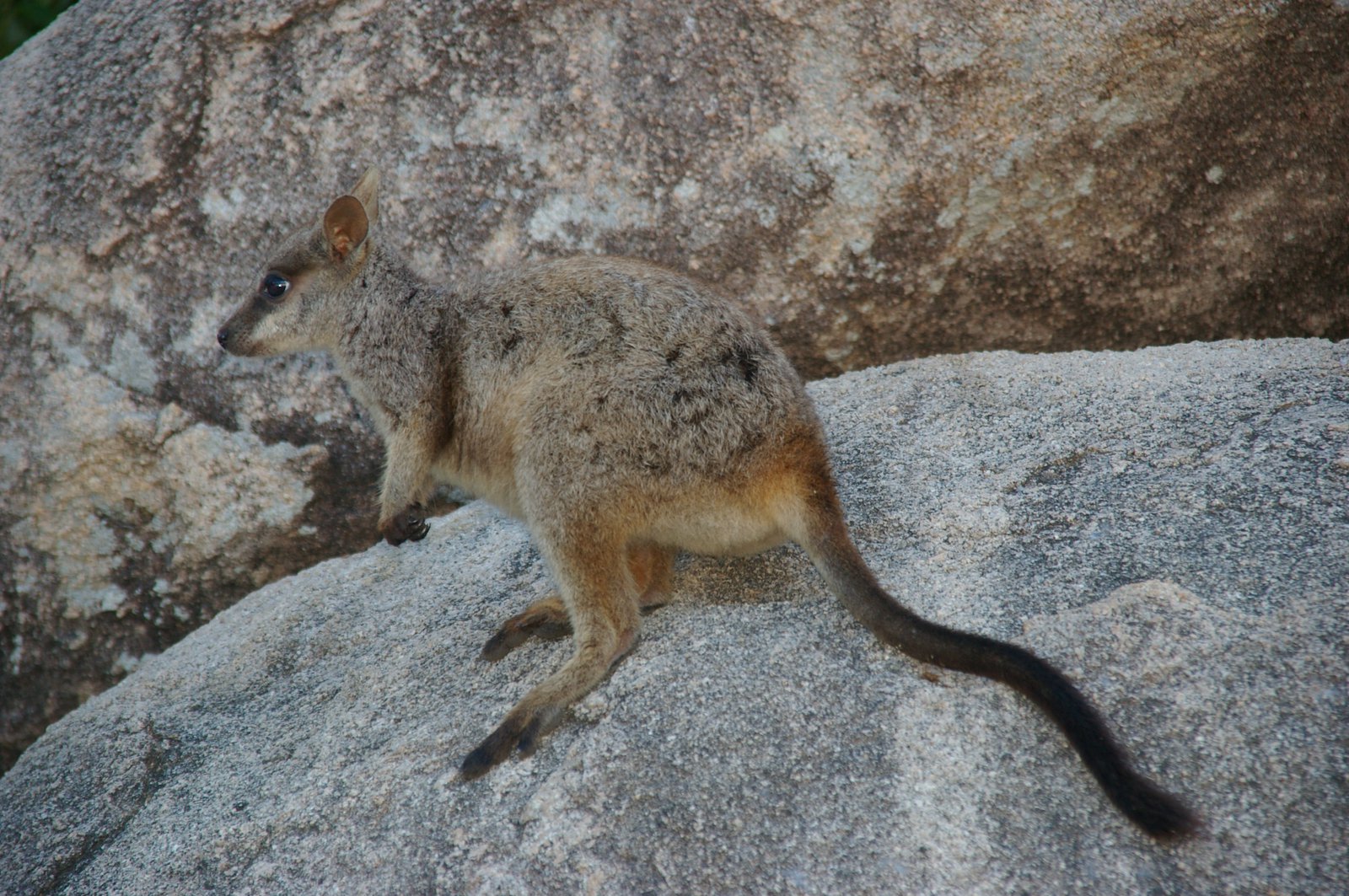Another piece of the Petrogale puzzle
Why are there so many species of rock-wallabies (Petrogale) in Australia? This question has puzzled and intrigued researchers for decades. Now a ground-breaking genomic study has provided some answers - and yet raised more questions.
With 17 currently recognised species, there are more species of rock-wallaby in Australia than any other genus of marsupial. The reasons as to why have long interested scientists, since understanding the mechanisms by which new species form (i.e., the process of speciation) remains one of the great mysteries of biology.

There are more species of rock-wallaby in Australia than any other genus of marsupial. Pictured here are P. assimilis on rocks, on Magnetic Island.
Image: Mark Eldridge© Mark Eldridge
Since the 1970s, it has been known that the iconic Australian rock-wallabies (Petrogale) show extreme chromosome diversity among species compared to other marsupials, particularly the six species in northeast Queensland – from Rockhampton to Cape York Peninsula. These closely related species have been thought to be a clear example of chromosomal speciation, as they are otherwise indistinguishable but differ markedly in the shape and number of their chromosomes. It was thought that these chromosome changes were driving speciation in this group, since genetic theory predicts that rearrangements in chromosomes should result in significantly reduced fertility in hybrid individuals and prevent gene flow between the chromosomally different rock-wallaby species.

An Allied Rock-wallaby Petrogale assimilis, on Magnetic Island, near Townsville. One of several morphologically indistinguishable species found in north-east Queensland.
Image: Mark Eldridge© Mark Eldridge
These species also have proved to be a headache for researchers and wildlife managers since they can’t be readily distinguished by standard morphological or genetic tests. Whether this is due to their very recent evolution, continued gene flow or lack of resolution of the genetic markers has remained unclear.
With recent technological advances, the ability to analyse genetic variation and evolution across a genome is now providing insight into long standing biological questions. We recently applied these powerful new genomic methods to the recently evolved species in northeast Queensland, and the results were stunning. For the first time, we had sufficient data and power to distinguish each species from its close relatives using genomic markers – and not just the shape and number of their chromosomes.
Previous research using fewer genetic markers suggested widespread gene flow between the different northeast Queensland rock-wallaby species. However with the increased genomic and geographic coverage deployed in this study, we found something different.
Surprisingly, we found no association between the degree of chromosome differences and the extent of gene flow amongst these species. In fact, gene flow was detected between some species, even though they differ by multiple chromosome changes. In contrast, other species with very similar chromosomes showed little evidence of gene flow between them. Clearly these wallabies have not read the textbooks! Additional research is now being undertaken to identify whereabouts in the genome the detected gene flow has occurred (e.g. in rearranged or non-rearranged regions of chromosomes). We hope this will provide insight into the underlying mechanisms driving the formation of new species.
Our seemingly contradictory results suggest that the causes of speciation in this fascinating group of marsupials are far more complex than had been thought and cannot be simply attributed to changes in chromosome shape and number alone. Additional studies of the genomes of these rock-wallaby species are now underway and it is hoped that they will reveal the secrets of speciation in this group and so lift the veil on the mechanisms by which life has proliferated on Earth.
Dr Sally Potter, Australian National University; and Research Associate, Australian Museum Research Institute.
Dr Mark Eldridge, Principal Research Scientist, Terrestrial Vertebrates, Australian Museum Research Institute.
More information:
- Potter, S., Moritz, C. and Eldridge, M.D.B. 2015. Gene flow despite complex Robertsonian fusions amongst rock-wallaby (Petrogale) species. Biology Letters 11: 20150731. http://doi.org/10.1098/rsbl.2015.0731
- Sally Potter, Jason G Bragg, Rustamzhon Turakulov, Mark D B Eldridge, Janine Deakin, Mark Kirkpatrick, Richard J Edwards, Craig Moritz, Limited Introgression between Rock-Wallabies with Extensive Chromosomal Rearrangements, Molecular Biology and Evolution, Volume 39, Issue 1, January 2022, msab333, https://doi.org/10.1093/molbev/msab333








